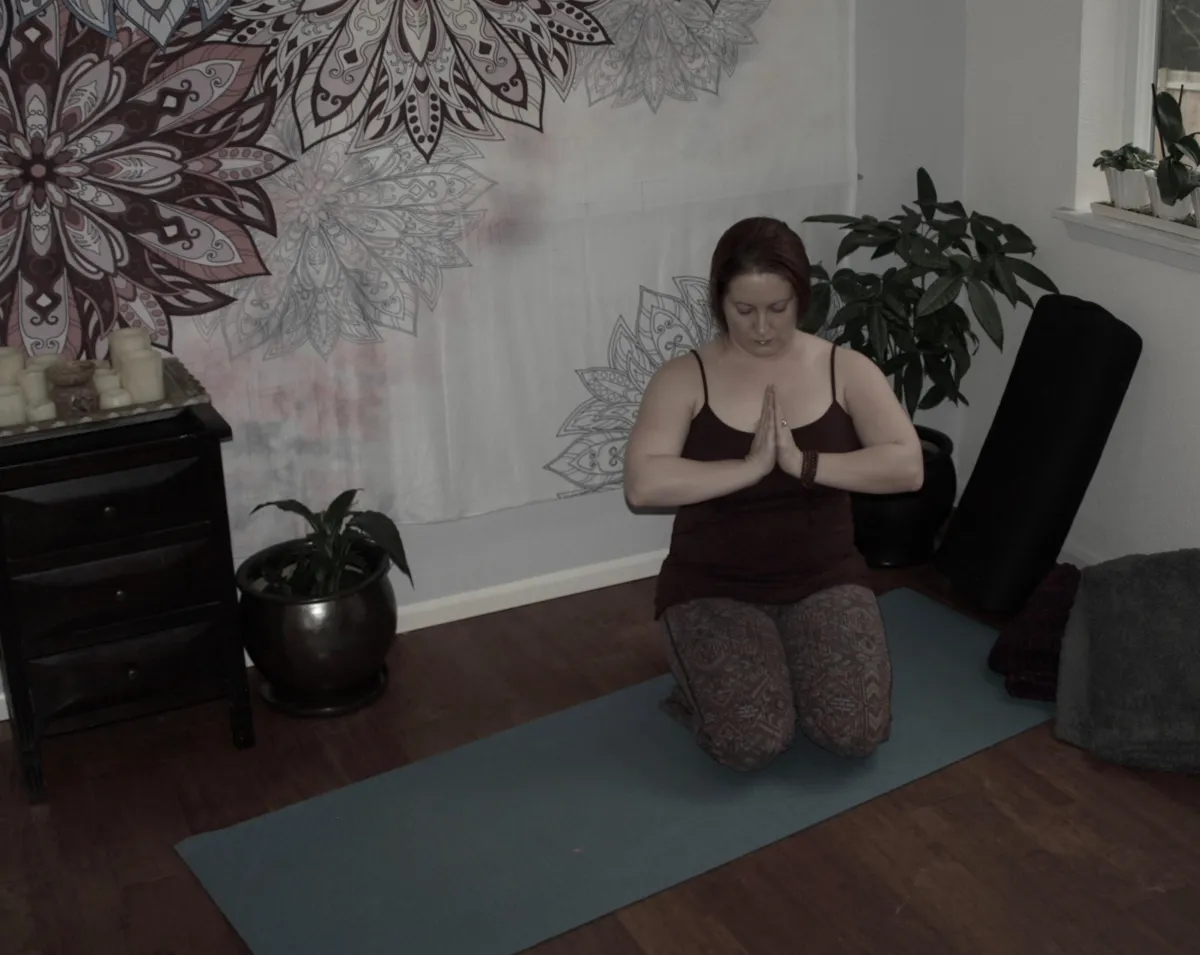Ideas for You
personalizing yoga for yourself

Meditation: what it is & what it isn't
“ The success of Yoga does not lie in the ability to perform postures but in how it positively changes the way we live our life and our relationships.” - T.K.V. Desikachar
The incredible benefits of regular meditation are not new news, but mindfulness and meditation does seem to be increasing in popularity lately. Plenty of books, articles, and blog posts have been published in recent years. So, we seem to be at least hearing or talking about the idea of it more. Still, most folks don’t practice regularly enough to experience the real benefits and many others are not enticed to actually practice at all. Why is that?
Although meditation and mindfulness practices (and there are as many methods as their are unique characters out there meditating!) are all designed to help turn down the constant barrage of chitter chatter rolling through the mind, it is decidedly not concentrating on some abstract concept of nothingness. Meditation is not trying to tune out or turn off your thoughts and feelings. How utterly boring, and frankly impossible, would that be?!
Meditation practices are simply exercises to teach the mind how to slow down and focus the train of thought long enough to get a more honest perspective on ourselves and our lives. Mindfulness practices are designed to build up our ability to actually pay attention to life as it happens so we don’t inadvertently miss great experiences in our rush through our days.

You get good at what you practice. Practice juggling a lengthy to-do list while managing the schedules of all five family members and still remembering to get the garbage cans to the curb on time every week, and well, you can get impressively good at “multi-tasking”. While our culture at large praises multi-tasking skills, research finds we also need at least some regular* single-pointed focus time for our brains to really function with healthy efficiency. In other words, we need some yin in our overly yang society!
Numerous NIH studies have reported beneficial effects of regular* meditation and mindfulness practices for:
chronic pain or stress,
high blood pressure,
IBS and Ulcerative Colitis,
anxiety, depression, and insomnia,
smoking cessation,
and other conditions.
*regular = daily, and for some of us multiple times a day
In my own experience, 10-15 minutes of morning meditation improves the function of the prefrontal cortex (the part of the brain processing experiences, thoughts, emotions and decision-making) and simmers down the insula and amygdala (the parts of the brain responsible for “gut responses” and fight or flight stress-based responses). In other words, starting my day with just a moment of focus helps me behave like a grounded, calm mommy rather than irritable, short-tempered, “why don’t you just put your ever loving shoes on before we are late!?” mommy.
The difference is noticeable to the extent that my son (the epitome of joyous morning person) will actually greet me in the morning by checking to see if I have had my meditation and coffee yet (because he is well aware I am not wired to be a joyous – or even half-smiley – morning person). And if the answer is no, he will wisely keep himself quietly playing in his bedroom until after I finish meditation. Meditation in the morning is an invaluable part of the morning routine in my house!
If you would like to learn more about how meditation and mindfulness affects the brain, check out this post on Psychology Today by Rebecca Gladding, M.D.
So, if meditation is so lovely, why wouldn’t everyone do it? My suspicion is because the term conjures up images of sitting in padmasana (lotus pose) – a posture the majority of the population cannot even do!? – for seemingly ridiculous lengths of time pondering utter nothingness. And, yes, I know some teachers do in fact teach meditation this way! Confession: I have never meditated that way, and if that were meditation, I wouldn’t do it either! Instead, let me share my three favorite meditative practices for “non-meditators”.
Feather-light Breath Meditation
Perfect for those with limited time. Ideal for those who need to meditate first thing in the morning before the rest of the busy day crowds out time for good intentions.

Set a simple timer like Medigong (my favorite free timer Android app) for 5-15 minutes.
Sit up in bed with plenty of pillows propped around your hips, back and arms, or settle into your favorite recliner and kick your feet up.
Let the muscles of the eyes, face, jaw, neck and shoulders relax, and rest your hands over your belly.
Breathe as if filling the lungs slowly and sending breath to permeate all the way into the belly so that the hands passively rise and fall with each breath.
Maintain full, expansive breaths that gently move the ribs and waist, and then begin to soften the sound and effort of breathing by imagining a feather in front of the nostrils that wouldn’t flutter on either inhale or exhale.
Give yourself permission to do just this – not having to fuss over your daily to-do list or worry about any of your day ahead – for 5-15 minutes. If the habit of fussing or worry interrupt, just note it and commit back to the feather-light breath focus again (and again, as needed) until the timer chimes.
Walking Meditation
Great if you have 15-30 minutes to get outside for fresh air. And perfect for those who get anxious just thinking about sitting still to meditate.

Get outside, rain or shine, and just walk for a bit. Try to move past any urge to walk quickly and march. It isn’t power walking! Rather, aim for something more like an amble.
Let the lips stay gently closed and relax the corners of the mouth, tongue, hinges of the jaw, neck, and shoulders.
Now, give the mind this game to play as you walk: think up single, progressive tense verbs that describe what your are actually experiencing as you walk. For example, as you amble along, think: “Walking… Ambling… Sighing… Seeing… Noticing… Hearing… Wondering…”
If the habit of fussing or worrying about your walk, your to-do list, or your day intrudes, just note it, and remind the mind to stick to the game. Recommit to single, progressive tense verbs that describe your actual experience of the walk, and recommit again, and again as needed. Let the rest of your day and your worries just wait a few moments until you finish your walk!
Japa Mala Meditation
For the verbal processors out there! This one can be done seated or walking, whichever your body needs. It uses a japa mala necklace made of 108 beads + a Guru Bead to help you keep track of repetitions without having to count. Many online sellers have these necklaces, but I would recommend my dear, local, fellow yoga teacher from Amazing Yoga Om.

Consider your intention and choose an appropriate mantra. [Caveat: Within the yoga tradition, formal mantras are typically given to students by their guru or teacher individually based on what the guru discerns would be most beneficial for the student to begin to embody. However, for the sake of utilizing a meditation practice just to establish the habit of meditation, let’s trust that your inner guru can guide you here for now.]
Beginning at the center “Guru Bead”, hold the first bead in line between your right thumb and index finger. Inhale through the nose and on the exhale, breath your mantra out loud. With the next breath, move to the second bead in line, continuing to repeat the mantra with each exhale.
I have used a handful of different English and Sanskrit mantras for different seasons of life, but, as an example, the mantra I use most currently is: “Do small things with great love.”
Try to overcome any urge to rush through the repetitions. Instead, look for soft, slow breaths, quiet mantra repetitions, and a moment to even pause and marinate between each breath. I know, 108 sounds like a lot, but – depending on the length of the mantra – it will likely take up less than 15 minutes of your day.
Holding the final bead in line, just as you come back around towards the Guru Bead, breath the final, 108th repetition, and then put the japa mala necklace away until next time. That’s it!
My number one tip when building up a consistent daily habit of meditation is to approach it with a light heart. I know, it is much like convincing a child to eat a their vegetables. Insisting that the body wake up 10 minutes early and sit perfectly still while the mind slows down is akin to insisting a child sit at the dinner table until their plate is clean. Because the mind is very similar to an obstinate three year old, hard handed approaches to meditation rarely work. Instead, consider trying a meditation practice for just 5 minutes a day for three weeks and see where it takes you. It’s a little more like trying broccoli prepared six different ways to see if one of those recipes tickles your fancy. You don’t know unless you give it a good try!
As a mom, and as a person with a history of anxiety and depression, I can say meditation has been the most profoundly transformative part of my personal yoga practice. And I would wish the same profound transformative experience for all my fellow yogis – brand new and experienced alike. What is your experience with meditation?
Looking for more guidance? Contact me, and let’s see if we can brainstorm more ideas for meditative, mindful practices.
© 2025 Balanced Mind Body Therapy, LLC. All Rights Reserved. | Privacy Policy | Terms of Service
920 Alder Ave, Suite #201, Sumner, WA 98390, USA
P.O. Box 581, Sumner, WA 98390
(253) 242-9061
margo@mybalancedmindbody.com





